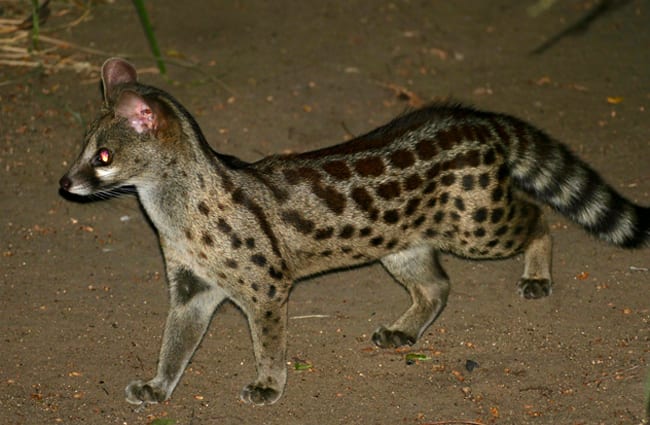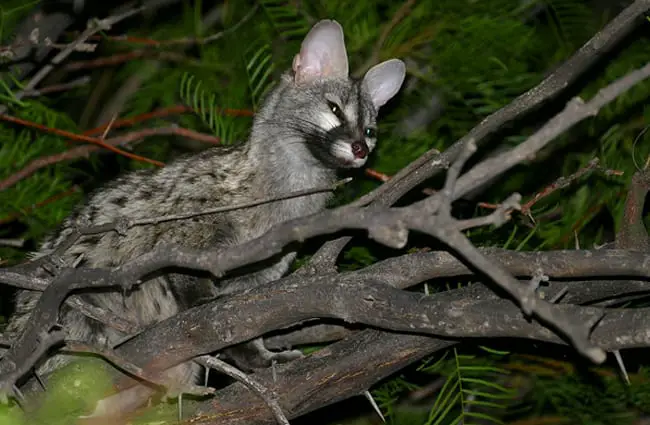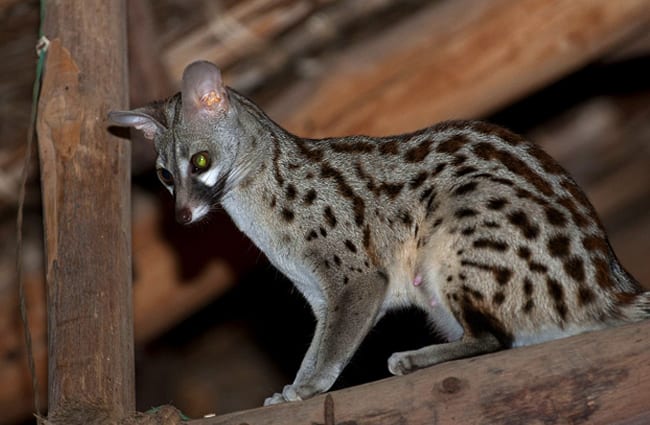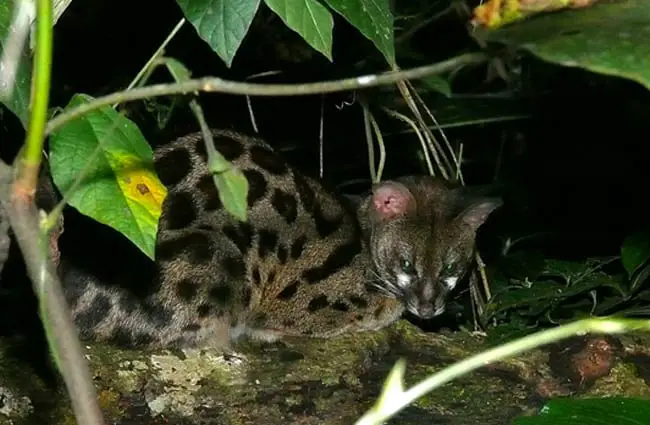Unveiling the Elusive Genet: A Comprehensive Guide
The world of African wildlife is brimming with fascinating creatures, and among the more enigmatic is the genet. These small carnivorous mammals belong to the family Viverridae and are known for their slender bodies, long tails, and remarkable agility. Their unique blend of characteristics has captivated naturalists for decades.

What is a Genet?
The term “genet” refers to a group of small to medium-sized carnivores belonging to the family Viverridae. There are around 14 different species, each adapted to its specific environment. They’re characterized by their long, flexible bodies, short legs, and long tails – often as long as their bodies! This physique makes them supremely agile climbers and adept at navigating dense undergrowth. Their coats vary greatly depending on the species, ranging from the boldly spotted patterns of the large-spotted genet to the more muted coloration of the common genet.
Species Diversity
While the common genet (Genetta genetta) is perhaps the most widely recognized, the genet family boasts significant diversity. Other notable species include the large-spotted genet (Genetta maculata), the rusty-spotted genet (Genetta pulchra), and the Abyssinian genet (Genetta abyssinica). Each species exhibits subtle variations in size, coloration, and preferred habitat. For example, the large-spotted genet tends to be larger and more terrestrial than its common counterpart.
Habitat and Distribution
Genets are native exclusively to Africa, although the common genet has been introduced to some parts of southern Europe. Their distribution is remarkably broad, encompassing rainforests, woodlands, savannas, and even mountainous regions. They exhibit a preference for areas with dense vegetation, providing both cover from predators and ample opportunities for hunting. The common genet, in particular, has successfully adapted to a wide range of habitats, even venturing into suburban and agricultural areas.

Finding Genets in the Wild
For those hoping to spot a genet in the wild, patience and a keen eye are essential. Look for signs of their presence, such as tracks, droppings, or scratch marks on trees. They are primarily nocturnal animals, so the best time to search is after dusk. Genets are skilled climbers, so scanning the canopy of trees is often a fruitful strategy. In areas where they frequent human settlements, checking around buildings and gardens at night might also yield sightings.
Diet and Hunting Strategies
Genets are opportunistic carnivores with a varied diet. While they primarily feed on small mammals like rodents and shrews, their menu also includes birds, reptiles, amphibians, insects, and even fruits. They are skilled hunters, employing a combination of stealth and agility. Their long tails provide excellent balance during chases, and their sharp claws and teeth enable them to subdue prey efficiently. They often cache food, storing excess kills for later consumption.
Ecological Role
As predators, genets play a vital role in controlling populations of small mammals and other prey species. This helps maintain the balance of the ecosystem and prevents any single species from becoming overly dominant. Their scavenging habits also contribute to the removal of carrion, preventing the spread of disease.

Reproduction and Life Cycle
Genets typically breed once or twice a year. Gestation periods vary depending on the species, but generally range from 70 to 77 days. Females usually give birth to litters of two to five kittens in a den – often a hollow tree, rock crevice, or abandoned burrow. Kittens are born blind and helpless, relying entirely on their mother for care. They begin to explore their surroundings at a few weeks old and gradually learn to hunt and fend for themselves. They reach sexual maturity around one to two years of age.
Evolutionary History
The evolutionary history of genets can be traced back to the Miocene epoch, around 23 to 5 million years ago. Fossil evidence suggests that early viverrids originated in Africa and Asia, gradually diversifying into the various species we see today. Their adaptation to arboreal life likely played a significant role in their evolution, leading to the development of their slender bodies and agile climbing abilities. Their genetic makeup shares similarities with other members of the Feliformia suborder, which includes cats, hyenas, and mongooses.

Genets and Humans: Interactions and Cultural Significance
Historically, genets have been hunted for their fur and meat in some parts of Africa. However, this practice has declined in recent years due to conservation efforts and changing attitudes. In some cultures, genets are revered as symbols of cunning and agility. They occasionally appear in folklore and traditional stories. Today, the primary threat to genet populations is habitat loss due to deforestation and agricultural expansion.
Encountering a Genet: What to Do
If you encounter a genet in the wild, it is best to observe it from a distance. Avoid approaching it or attempting to handle it, as this could cause stress or provoke a defensive reaction. If you encounter a genet in your home or garden, allow it to leave on its own accord. Do not offer it food, as this could encourage it to return and become dependent on humans. Report any sightings to local wildlife authorities.

Caring for Genets in Captivity
Caring for genets in captivity requires a specialized understanding of their needs. They require spacious enclosures with plenty of climbing structures, such as branches, ropes, and platforms. Their diet should consist of a balanced mix of meat, fruits, and vegetables. Enrichment activities, such as puzzle feeders and scent trails, are essential to stimulate their minds and prevent boredom. Regular veterinary care is crucial to ensure their health and well-being.
Important Considerations for Zookeepers
Genets are naturally solitary animals, so they should typically be housed individually. Providing adequate privacy and minimizing stress are essential for their welfare. Zookeepers should also be aware of their nocturnal habits and adjust lighting and feeding schedules accordingly. It’s crucial to replicate their natural hunting behaviors through enrichment activities, offering them opportunities to forage and solve problems. Avoid unnecessary handling, as this can cause them anxiety.

Fascinating Genet Facts
- Genets possess anal scent glands that they use to mark their territory and communicate with other individuals.
- They can rotate their hind feet 180 degrees, allowing them to descend trees headfirst.
- Their diet is remarkably diverse, encompassing a wide range of prey and fruits.
- They are skilled climbers and jumpers, capable of navigating dense vegetation with ease.
- They play a vital role in controlling populations of small mammals and maintaining ecosystem health.
The genet, with its elusive nature and fascinating adaptations, remains a captivating subject for zoologists and animal enthusiasts alike. By understanding its biology, behavior, and ecological role, we can contribute to its conservation and ensure its survival for generations to come.

![Red Angus Closeup of a beautiful Red Angus cowPhoto by: U.S. Department of Agriculture [pubic domain]https://creativecommons.org/licenses/by/2.0/](https://animals.net/wp-content/uploads/2020/03/Red-Angus-4-238x178.jpg)




![Red Angus Closeup of a beautiful Red Angus cowPhoto by: U.S. Department of Agriculture [pubic domain]https://creativecommons.org/licenses/by/2.0/](https://animals.net/wp-content/uploads/2020/03/Red-Angus-4-100x75.jpg)

